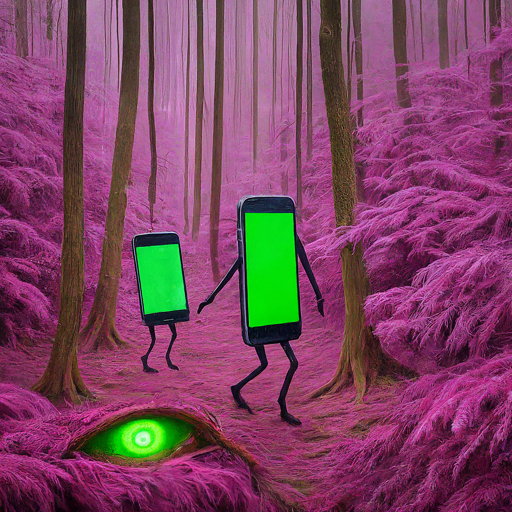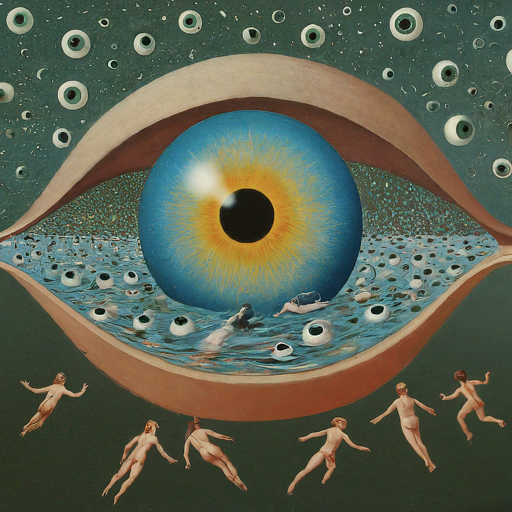
When Everything Is Monetized Interactions Are Disingenuous
We were all told that with social media we’d never miss a thing and we all believed it with blurry eyed optimism. Social media was supposed to bring friends and family closer, instead it gives us a way to have shallow interactions with people we don’t really care about all that much because for the most part we hardly know them anymore.
Social media wasn’t built for friendships, it was built to monetize attention, and that means that even if you do have any friends left in the world, you hardly see them in your feed and probably spend most of your time interacting with them by silently sending them viral content that they’ve already seen 3 other times.
We are lured into social media use with the dangerous and unhealthy temptations of potential fame, wealth, greed, and voyeurism. This is at the cost of using hours of our time every day to train an AI on human behavior in order to make it more effective at making platforms billions of dollars per year.
For me, social media just doesn’t have the kick it used to have. I don’t enjoy using it, I don’t like the content I’m seeing and I don’t like the interactions I’m having. Since taking time away I’ve done some thinking about how social media works and why it’s so awful.
Algorithms Magnify And Exploit Natural Societal Hierarchy: How The Worst Of Us Rise To The Top

Social media algorithms reward people who do things to get attention. This wasn’t a new concept. Society already gave people who crave attention high priority, I believe it’s a weakness. Social media exploits and magnifies this tendency by many orders of magnitude.
Pre-social media, you had to at least get past a gate keeper at a record label or movie studio to get a pass to be an outrageous person. Today if you’re young and hot, loud or outrageous enough you’ll eventually get views.
When social media came out, most of the content was user generated by people we knew in real life. There was no algorithm to make you famous. Back in these days, pioneers like Tila Tequila, literally sat at their desktop sending thousands or tens of thousands of friend requests. Today most content we see is viral content from people we don’t follow, that has been artificially inserted into our feed as suggested content. Much of this content is salacious, anger provoking, or part of a political or social agenda.
Gone are the artists, the theologians, philosophers, poets, painters and photographers, if they exist at all they have had to pivot to making reels about how they do their work rather than just sharing their efforts.
Suggested posts are a mine field that includes political propaganda, rage bait, and young women selling pornography subscriptions. These are things you can’t opt out of having inserted into your feed.
Especially problematic is the political garbage that has driven iron clad divisions into family and friendship circles and splintered our networks. When you have no family, no friends, you are the most valuable to the algorithm because you have nothing else competing for your time. You are also at your weakest since you are dependent on this system for entertainment and human connection. Algorithms are not intended to bring people together, but by design or by consequence of their purpose, they divide us.
Science has found that some of the most intense attention and engagement we can provide is when we are mildly irritated, and the algorithms seem programmed to exploit that.
If we aren’t irritated, the algorithm seeks to keep us desperate, lonely, and ever so sexually aroused, constantly hungry, constantly thirsty for human interaction and dopamine to keep us tapping, clicking, scrolling and shopping.
This algorithm is built to manipulate our moods, our social graph – both online and in the real world, and our belief system. It cannot work without taking us down a path of extremism, in a sort of circular choose your own adventure digital narrative. No matter what you click or where you scroll, one way or another each brick in the path was placed there by a machine learning algorithm and it is leading you towards extremist views.
There is nothing wrong with having a way to share photos or stories online, but that’s not what social media is. These features are the trojan horse that we accept in exchange for providing the platform with attention and data. It uses that attention to extract the most money possible from us. In order to do that, it learns from our data who we are, what we like, and what we believe. It sorts us into buckets of our peers. Once it has us sorted it takes us through a funnel, and these funnels are used across digital marketing campaigns to get users to take actions that we would not have taken otherwise.
The algorithms are designed to use what it learns against us in order keep us engaged, even if it destroys our sanity in the process. Once you realize that we are being farmed with zero regard for our free will, safety, or dignity, you realize that this is one of the most dehumanizing systems ever invented.
Machine Learning algorithms are artificial parasitic organisms unlike those that we have encountered before. They cannot work without humans providing them with massive amounts of data. These parasitic programs aren’t affecting us just on social media, they’re changing our search results, changing our news feeds, inserting people into our lives by suggesting people to follow. These algorithms manufactures consensus by personalizing the world to match our interests but it is not a static state that we live in, our minds are dynamic, as is our world view. It is every changing, and algorithms cannot work as they do without nudging our worldview.
If these algorithms were unsuccessful at manipulating their audiences, they wouldn’t be used, the fact is that they are one of the most successful money making tools in history and humanity is greatly suffering because people everywhere are allowing their minds to be influenced by the stories and characters that the algorithms insert into our feeds.
Social Media Algorithms And The Attention Economy It Monetizes Is Unhealthy

There is no safe way to consume social media content. Every major platform uses machine learning to inject your feed with ads. Ads are generally harmless, except that they may prompt you to spend more money than you otherwise would, but it doesn’t stop there. These algorithms inject news stories and they suggest who to follow. This is where we begin to be exposed to dangerous ideas, political bias and extremism.
This country is having a mental health crisis and I believe it’s due to a variety of reasons, but social media magnifies and amplifies all of it.
Algorithms never get tired and they are always recording

When we agree to allow “smart” devices into our homes, things like Smartphones, apps, smart TVs, and smart speakers, we are filling our homes with arrays of sensors, cameras and microphones that watch, listen, and record 24/7.
While no human is watching on the other side (probably), an algorithm watches and then uses what it learns against you. It uses this information for marketers trying to separate you from your money but in reality, our data is up for grabs for anyone who pays. In some cases even law enforcement or the federal government have obtained bulk user data by just asking for it or worse, buying it freely on the open market.
Worse, all of this data usually ends up being stolen, packaged up and sold on the dark web. Once placed there, it can never be erased. This enabling scammers to blackmail and steal assets from people who are completely blindsided by it. One such case recently involved Graceland. Scammers placed a lean against Graceland and trying to repo it for default. This was only possible by collecting sensitive personal data from public records and likely from data dumps.
Other common scams include, blackmail, sim swaps, and ransom scams where scammers will claim to have kidnapped a loved one and have gone as far as to play back AI synthesized versions of their family member’s voice asking for help.
The more data we provide AI and social media algorithms with our public posts, the more we enable it to be used against us.
Using Algorithms Safely

I use algorithms a lot, and I use AI. In fact I used AI to generate the images for this article but I’m careful where I use it.
Until social media companies allow consumers to have a raw, unfiltered timeline, I do not believe that using any social media site is advisable.
This is difficult because social media sites like X contain relevant information that may be useful or educational, and they are a walled garden. Often you must have an app on your phone to use these sites, and you must have an account and login to use it. Once you do that, the algorithm starts learning about your habits, beliefs, social connections, physical location and more. Some of these tools measure our activity dozens of times per hour. When I have used software to block and count the number of attempted connections, I have found that it can be upwards of 20,000 requests per day from just one device. These requests come from different software kits running inside of the apps we have on our phones. These requests are gathering analytics, web browsing history, location data, and in some cases trying to determine who is nearby.
Download apps carefully: Use your browser instead

Apps are necessary for banking, navigation and entertainment but they are black boxes. Apps remain open and run in the background where they can gather unlimited information from the permissions granted it by the user. This includes location history and sensor data. Just one sensor on the phone, the accelerometer, can be used to determine direction of travel, speed, and more. When combined with gyroscopes the accuracy vastly improves. Scientists in one study were able to determine with 80% accuracy the keystrokes of a user just by using sensor data. Most apps have full access to these sensors as they need them in order to rotate your screen when you rotate your device, or to provide directions while mapping.
I always opt to use a web browser whenever that is available, and find that mobile sites are not only less intrusive, they can be made safer by using an Ad blocking plugin or simply by enabling secure settings in the browser. It is more difficult to block app activity on phones, but it can be done with certain apps that create a local VPN on your device, and route traffic through a local DNS server, but this precludes a user from being able to also use a VPN that masks your IP address. If using an iPhone, Apple’s Private Relay can add more safety. I use a VPN and enable their ad blocking DNS features, but this is risky if your VPN provider is compromised. I use Mullvad, which does not require an email address to use and does not require payment information, it can be used by buying a gift card on Amazon or making semi-anonymous bitcoin payments.
Use a good ad blocker like ublock origin and decentraleyes. Most people don’t realize that the web works by using free fonts and script libraries, those scripts are provided by companies like Google, and are loaded remotely from Google services, which means that whenever you visit a website using these fonts and scripts your device downloads them from Google who sees your IP Address and other information about your device such as the website you are visiting when you downloaded those resources.
There are apps and plugins you can use to block 3rd party JavaScript fonts, and 3rd party fonts. This may break some websites but in iOS disabling content blockers temporarily or permanently for a website can be done in a few taps.
Silo Apps
I have a tablet, that tablet rarely never leaves my house. This tablet is limited to what data it can collect because it’s always on my local network, and since this tablet runs Android I can disable the mic and camera, preventing apps running on that device from eaves dropping. I use this tablet for keeping spyware laden social media apps and shopping apps. Android also allows users to create separate profiles, so you can separate social media apps from shopping apps or have a separate profile where sensitive information is stored apart from apps that may access it.
Siloing apps has another benefit, when the social media apps are not in your pocket, you have to make a conscious decision to walk over to your device to access the tablet. In my case, the tablet is set up to power off at 11pm and has no set time to power back up, which means I have to want to go on to social media enough to wait 10-15 seconds for it to boot up. I leave this tablet off for days at a time and often don’t charge it more than once or twice a month. My social media usage is usually about 5-10 minutes per session.
If you don’t have another device, but your phone is android based, you can create a separate profile, and keep important and useful apps on one and social media apps on another, requiring you to switch profiles to access them. It also helps keep browsing and location data accumulated on your main profile from being hoovered up by social media apps placed in the second profile, however if you are using android, Google is still seeing all of the data they collect across all profiles on the device, so using something like LineageOS or GrapheneOS can help mitigate Google’s data snooping.
Use an Ethical Search Engine:
Google and Bing are not good choices, but they do have great search algorithms, and sometimes I do occasionally use them.
The best search engine for me has been Perplexity.AI. It allows me to use many different AI models and provides references for its responses so that I can fact check it.
When searching controversial topics like World War II or vaccine information, I ask the same question of multiple models and compare responses and sources.
I find that conversational search with an AI is a great learning tool, and while the AI is an algorithm, and must be scrutinized, having the option to check 3-5 different models helps get a diverse view of the data in each model.
When it comes to raw searching, I use different search engines on each device. This includes Ecosia, Startpage, DuckDuckGo, and MoJeek, Qwant, You, Searx, and Swisscows. All of these search engines use algorithms to understand what users are searching for, but by breaking up which engines I use, I’m able to make sure that no single entity has total control over my search results. Whenever I get a new device or browser, I select a different default search engine.
Disable The Radios on Your Device When Not Needed:
When at home, disable any radios you are not using on your device, for me I usually only leave WiFi on.
When I leave my home, I disable wifi and turn on Cell signal.
When you are at home, and your cell provider is still enabled it can help fill on gaps if you get too far from your wifi range, but your cell provider is getting all kinds of data about your device.
When you leave home, your phone is scanning wifi networks constantly, all along your route. It never needs to connect with them to leak your information. It does what is called a “handshake” where it exchanges information with the network about your device and if you have any google apps running on your phone, Google sees your account has pinged that wifi router. This is not just surface level data, Google knows where every user is at all times, and this has been proven by Google being able to pull geo warrants for locations that reveal the identity of every person in a specific area. What this means is that by just having your wifi radio on unnecessarily, you can be implicated in a crime just by being in the area where a crime is committed. Of course, this is a worst case scenario, but Google could not provide this data if they didn’t have it, and have a means to analyze and process it. One must wonder what else they use this high resolution location data for.
Apple does not fulfill requests for geolocation data to law enforcement, but even if you have an Apple device, if that device has any Google apps on it, even if that app cannot access device location data, Google can identify you because the location is determined by the router, and your signal strength from the router, as well as Bluetooth and other sensor data.
Review App Permissions / Privacy Settings Regularly
Don’t let apps collect location, microphone, camera or photo data unless needed. Disable background app refresh for apps that don’t need it, and disable mobile data as well. Quit apps and clear browser history, and review your privacy settings at least every 2-3 months to make sure every app you’ve given permissions to is still used and still needs them.
Take Advantage of Low Power Modes
Battery Saver or Low Power Mode reduces the phone’s background activity including refreshing app data and using sensors. If your phone is just hanging out in your pocket – put it in battery saver mode.
Summary
In summary, I quit social media because algorithms that build our feeds are built to exploit and manipulate us, and often these algorithms naturally appeal to toxic traits to try to get strong reactions from users to keep them engaged.
These algorithms were built without any regard to safety, are invasive and dehumanizing, they perpetuate mental illness, promote toxic behavior. They open a gateway for strangers and radical ideas to enter our lives and minds.
We can see the damage these algorithms do. Kids are especially at risk. Many times we have seen news stories about boys and girls gone missing or blackmailed from encountering the wrong person online.
Worse, apps like Instagram and Tiktok have been gateways to full fledged sex work by both men and women deciding to make a few extra bucks posting explicit content on apps like OnlyFans.
People who make this content cross market their sex work to their Instagram audiences and in many cases directly link their profiles to these other accounts.
In the beginning, I believed that there were healthy and responsible ways to use these tools, but now I think there isn’t a way to use these tools safely, except by limiting time spent on them to virtually none.